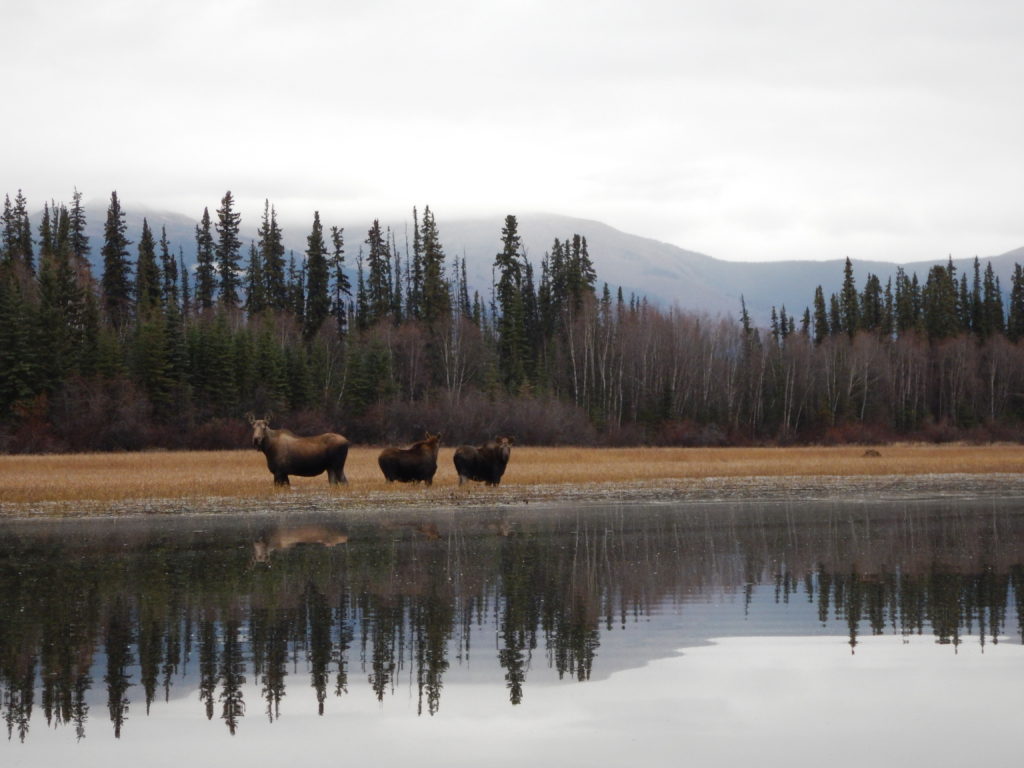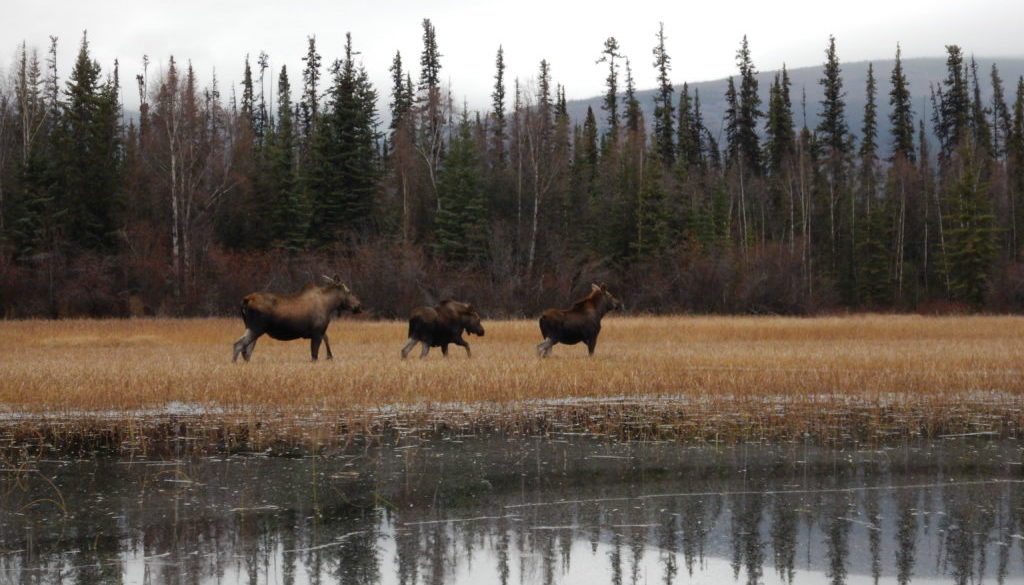Developing a much needed wetland policy
Header Image: Moose, Randi Newton
Written by: Randi Newton, Conservation Coordinator
This spring the Government of Yukon started developing a policy for wetland management in the territory. While it seems long overdue, CPAWS is nonetheless excited to be contributing to the process. We hope to see a robust, conservation-focused policy that will fill a large gap in protecting Yukon’s wetlands and provide land managers with a consistent approach for making decisions. Right now most wetlands in the territory are protected only by their remoteness, not by a formal policy, and there is no straightforward roadmap for wetland protection when wetlands fall in the path of development, resource extraction or infrastructure.
HOW IS THE POLICY BEING DEVELOPED?
The wetland policy is in the very early stages of development and it should be complete by early 2020. Between now and then, we’ve been told the government will work with First Nations and look to Yukoners for input. We will keep our eye on opportunities for engagement and, in the meantime, you can come chat wetlands with us at the CPAWS office if you’d like to learn more about what we’d like to see in the policy. As one component of policy development, the Government of Yukon has invited various organizations to participate in a series of roundtable meetings and work on elements of the policy. We recently took part in the first stage of these meetings and we were struck by the collaborative approach being used to develop the policy. The meeting room was filled with people with a wide diversity of perspectives and values, including representatives from First Nations, mining, oil and gas, forestry, different government departments, environmental and conservation organizations, renewable resource councils, and municipalities.
As part of the roundtable meetings, people were asked to write down, in about six words, why this conversation about wetlands mattered to them and what their bottom-line interest in the policy was. As you can see from the sample below, answers were diverse and sometimes conflicting.
- Thoughtful protection, not chipping away, project-by-project
- Need to be able to mine and reclaim land
- Wetlands provide life for all people Ensuring habitat protection and species persistence for future generations
- Integral to ecosystem resiliency and food security
- Wetlands have sustained First Nations for thousands of years
- The future of wetlands is ours
- Yukon’s environmental and economic needs are met
With this many voices in the room, will it be challenging to collaboratively work on a wetland policy? Absolutely. In fact, it is likely there will be elements that the group will not agree on. However, we are also optimistic that people will learn from each other and work to build as much of the policy as possible in a collaborative way. Our hope is that the government is committed to applying this work and creating a forward-thinking, conservation-focused policy that turns the tide of wetland loss. Although challenging, the time to act is now and making tough decisions on a policy will never get easier.
THE IMPORTANCE OF PROTECTING WETLANDS

Yukoners value the many crucial functions that wetlands provide. They are a rich source of biodiversity and are home to both rare and common mammals, birds, fish, insects, amphibians and plants. Wetlands help to sustain cherished ways of life, including activities like hunting, fishing, trapping and foraging. Many wetlands are the site of past and current First Nation camps and travel routes. People also visit wetlands for spiritual recharge and pastimes like hiking, bird watching and photography.
As long as they remain intact, wetlands will continue to shape the Yukon landscape and the ecological processes that sustain it. For example, some wetlands in the territory contain depths of peat layers that are thousands of years old. These deep organic layers trap significant amounts of carbon that would otherwise find its way into the atmosphere. Wetlands are also natural reservoirs that replenish groundwater supplies, buffer against flooding and release water in times of drought. By storing sediment and contaminants, wetlands act as natural environmental filters.
WHAT SHOULD THE WETLAND POLICY INCLUDE?
Certain elements are critical if the policy will be truly effective at protecting wetlands.
- No-net loss of wetland functions. Wetlands are complex ecosystems and they provide many functions, including habitat, water regulation and carbon storage. If development is allowed to impact these functions, impacts must be fully offset through restoration or reclamation. Otherwise, we risk losing wetlands little by little, project by project.
- Protection of important wetlands. Some wetlands are so valuable for ecological or cultural reasons, or impossible to restore, that they should be completely off limits to development and disturbance. The wetland policy needs to include a way to identify and designate these off-limit wetlands.
- Clear mitigation hierarchy. Realistically, not all wetlands in the territory will be protected from development. However, the policy needs a clear hierarchy of actions so that the first priority is to avoid wetland impacts, the second is to minimize impacts, and the third is to offset impacts. It would be a mistake to rely on offsetting impacts through reclamation, since some wetland types like fens and bogs take thousands of years to form.
- An ecosystems approach. The policy needs to include a framework to consider and protect the roles that wetlands play at a landscape scale. These critical functions can be missed and then eroded if wetlands are only managed during the review of individual projects.
- Wetland inventory and research. Wetlands are generally poorly mapped and understood in the territory. The policy should commit to future research and inventories to help us better understand their critical ecological and cultural values.
- Implementation strategy. The wetland policy is only the starting point for protecting wetlands in the Yukon and it must include a strong roadmap for implementation. This will help ensure that the policy is clear and achievable, and that resources and capacity are in place to support its goals.
CPAWS is pleased to see the government take this important step towards conserving the territory’s wetlands. Yukoners know just how valuable wetlands are and, with the right policy framework in place, we can ensure they will persist for generations to come.

